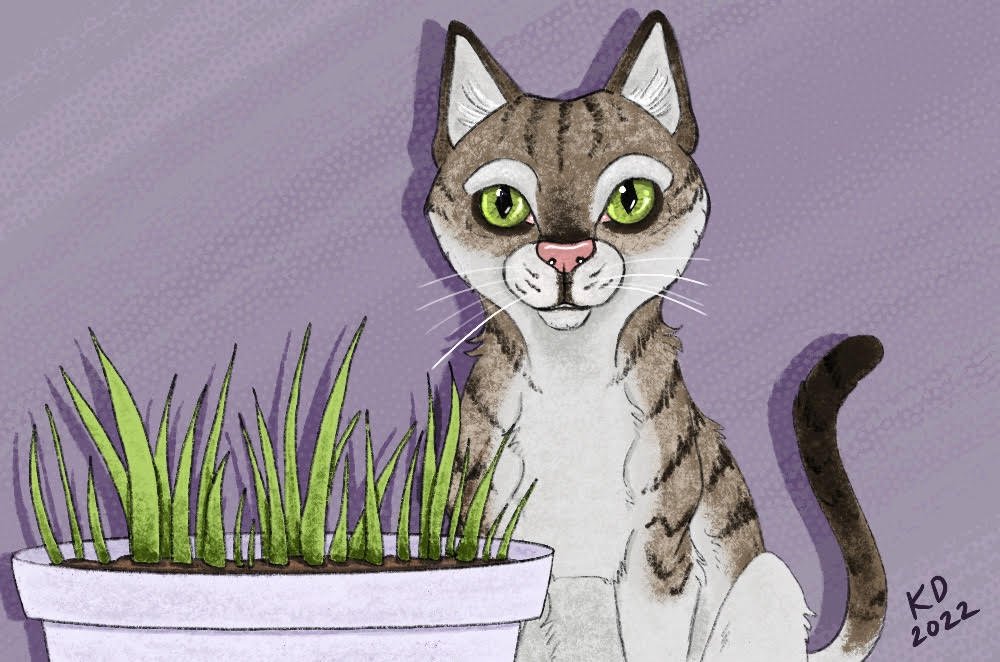What is Cat Grass? Should You Grow Some at Home?
Do you have a cat that likes to nibble on your houseplants? Does your cat rub their face all over them? There is a solution for cat owners to help take some of the heat off their plants. That solution is cat grass!
Despite being carnivores, cats have long interacted with plants. Mostly, as mentioned above, in the form of rubbing their faces all over them, but in the case of certain grasses, they actually consume them.
What is the reason for consuming this grass? Veterinarians have a number of theories as to why they do this, but it is widely accepted that it’s done to aid with passing through indigestible items, such as fur.
Grass will often make a cat regurgitate, and in some cases, defecate, which allows whatever items they’re having trouble digesting to leave their systems, things like hairballs or parasites.
It has also been theorized that eating grass offers cats similar relief that we’d experience when taking an antacid – a stomach-settling effect.
What is Cat Grass?
Cat grass, put simply, is most often just wheatgrass. Some are also grown from rye, barley, or oats. Unlike catnip, which is a member of the mint family, catnip is less about a chemical attraction and more about giving your cat access to something they can use to help regulate digestion. Something that would naturally occur in an outdoor environment.
Cat grass is also safer than outdoor grass as you know it hasn’t been treated with harmful chemicals and other animals haven’t slobbered on it or used it as their washroom.
The best part about growing cat grass in your home is your cat will stop spending so much time rubbing their faces on your pre-existing houseplants. If you move your plants once the grass is being used, you can redirect their interest in nature back to the grass.
Benefits of Cat Grass
Cat grass also contains some real nutritional benefits for kitties. It has iron, calcium and proteins, vitamins A, C, E, K and B, 17 amino acids, and enzymes that aid in digestion. It really is a great little plant!
How to Grow Cat Grass
Cat grass kits can be found online at a number of different places. We suggest purchasing a cat grass kit, so you have instructions to follow at first, but here are some basic tips, from PetMD, for getting your cat grass going:
Before sprouting, seeds should be kept damp but never soaked. Once sprouts appear, use less water.
Allow three to seven days for seeds to sprout.
The grass will be ready for your cat to eat in 10 to 14 days after sprouting, or once it has reached a height of four inches and will last one to three weeks.
Continue to keep it in natural light and water daily with a spray bottle.
Do not overwater, as this causes mould.
Allow your cat to eat directly from the container.
When the grass starts to wilt or turn colour, plant a new container.
Final Thoughts
So, take the first step to keep your houseplants as happy as the kitty dragging its face across them. Invest in a cat grass kit and start growing your own grass at home just for your cat. They will be happy to chew, rub, and sniff the wheatgrass while hopefully leaving the other plants alone. The benefits speak for themselves, both mentally and physically for your feline.

